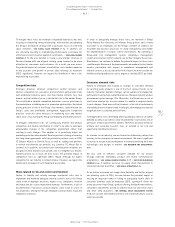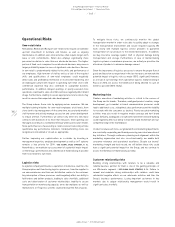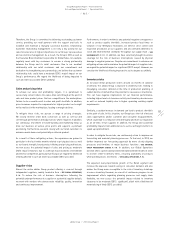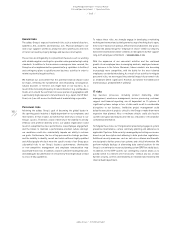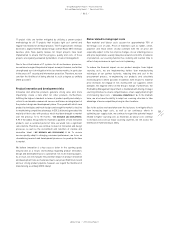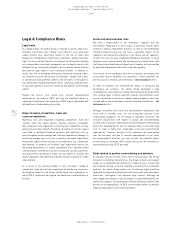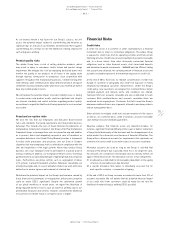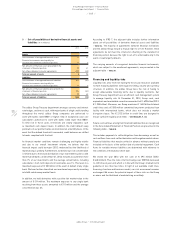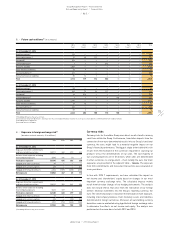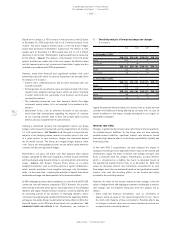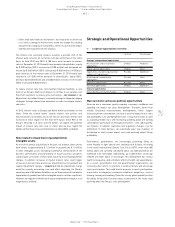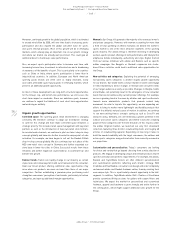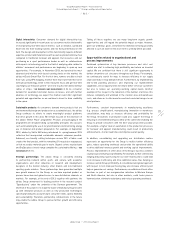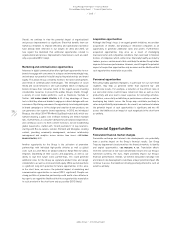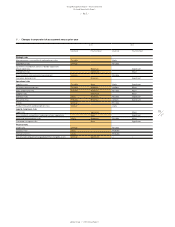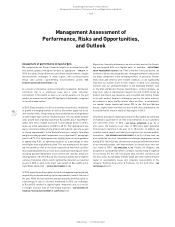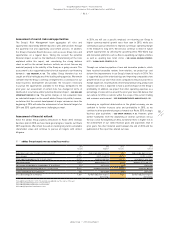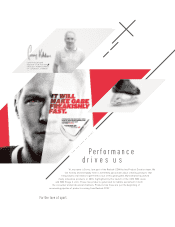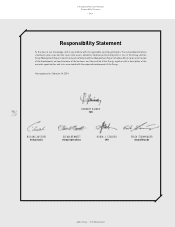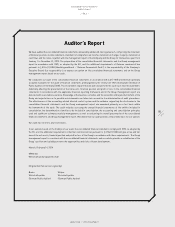Reebok 2013 Annual Report Download - page 179
Download and view the complete annual report
Please find page 179 of the 2013 Reebok annual report below. You can navigate through the pages in the report by either clicking on the pages listed below, or by using the keyword search tool below to find specific information within the annual report.
adidas Group
/
2013 Annual Report
Group Management Report – Financial Review
175
2013
/
03.5
/
Risk and Opportunity Report
/
Strategic and Operational Opportunities
/
Other fixed-rate financial instruments are measured at amortised
cost. Since a change in interest rates would not change the carrying
amount of this category of instruments, there is no net income impact
and they are excluded from this analysis.
The interest rate sensitivity analysis assumes a parallel shift of the
interest yield curve for all currencies and was performed on the same
basis for both 2012 and 2013. A 100 basis point increase in interest
rates at December 31, 2013 would have increased shareholders’ equity
by € 0.00 million (2012: increase by € 0.00 million) and decreased net
income by € 0.00 million (2012: decrease by € 0.00 million). A 100 basis
point decrease of the interest rates at December 31, 2013 would have
resulted in a € 0.00 million decrease in shareholders’ equity (2012:
decrease by € 0.00 million) and a € 0.00 million increase in net income
(2012: increase by € 0.00 million).
To reduce interest rate risks and maintain financial flexibility, a core
tenet of our Group’s financial strategy is to continue to use surplus cash
flow from operations to reduce gross borrowings
/
SEE TREASURY, P. 135.
Beyond that, the adidas Group is constantly looking for adequate hedging
strategies through interest rate derivatives in order to mitigate interest
rate risks.
In 2013, interest rates in Europe and North America remained at low
levels. Given the central banks’ current interest rate policies and
macroeconomic uncertainty, we do not foresee any major interest rate
increases in these regions for the near-term future. Since 90% of the
Group’s financing is in euros and US dollars, we regard the potential
impact of interest rate risks only as minor and we now regard the
likelihood that these risks will materialise as likely (2012: probable).
Risk related to impairment of goodwill/other
intangible assets
As a result of various acquisitions in the past, our balance sheet carries
book values of approximately € 1.2 billion in goodwill and € 1.4 billion
in other intangible assets (including trademarks). Deterioration in the
business performance and particularly in future business prospects
could require corrections of these book values by incurring impairment
charges. In addition, increases in market interest rates could trigger
increases in discount rates used in our impairment test for goodwill and
require impairment charges
/
SEE NOTE 02, P. 195. An impairment charge
would be a purely accounting, non-cash effect impacting the Group’s
operating result. We believe the effects on our financial results related to
impairment of goodwill and other intangible assets could be significant.
However, we regard the likelihood of a future impairment charge of such
magnitude as unlikely.
Strategic and Operational Opportunities
Macroeconomic and socio-political opportunities
Since we are a consumer goods company, consumer confidence and
spending can impact our sales development. Therefore, better than
initially forecasted macroeconomic developments, which support
increased private consumption, can have a positive impact on our sales
and profitability. Low unemployment rates, rising real incomes as well
as a growing middle class with increasing spending power are fuelling
consumption, particularly in emerging economies – and, subsequently,
our industry. In addition, legislative and regulatory changes, e.g. the
elimination of trade barriers, can potentially open new channels of
distribution or lead to lower import costs and positively impact Group
profitability.
Furthermore, governments are increasingly promoting living an
active lifestyle to fight obesity and cardiovascular disease. According
to the latest International Obesity Task Force (IOTF), more than 600
million adults are currently considered obese. An additional billion are
estimated to be overweight. Additionally, up to 200 million school-age
children are either obese or overweight. This development has serious
health consequences and a dramatic effect on health care expenditures.
As a result, governments and non-governmental organisations are
increasing their efforts to promote a healthy lifestyle and encourage
sports participation. This could lead to increases in sports participation,
in particular in categories considered suitable for weight loss, such as
training, running and walking. Given the strong global market position
the adidas Group and its brands enjoy, acceleration in this trend could
positively affect the Group’s sales development.
08
/
Corporate opportunities overview
Likelihood Potential impact
Strategic and operational opportunities
Macroeconomic and socio-political
opportunities
Unlikely Moderate
Organic growth opportunities Unlikely Major
Opportunities related to organisational
and process improvements
Possible Significant
Marketing and communication
opportunities
Possible Minor
Acquisition opportunities Possible Minor
Personnel opportunities Unlikely Significant
Financial opportunities
Favourable financial market changes Unlikely Major


